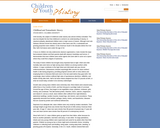
In this activity, students read and discuss excerpts from a slave autobiography.
- Subject:
- Social Studies
- Material Type:
- Activity/Lab
- Provider:
- Children & Youth in History
- Date Added:
- 04/27/2017

In this activity, students read and discuss excerpts from a slave autobiography.

In this lesson, students examine daguerreotypes of children in order to demonstrate how images are socially constructed and to identify the changing role of children in American society during the 19th century. Students will also compare and contrast these images with contemporary photographs. In the culminating activity, students are asked to write a paragraph in which they make a brief argument - including a thesis and two piece of evidence in support of their proposition - about childhood in the 19th century based on the daguerreotypes.
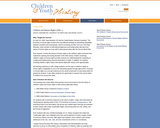
This teaching-case study utilizes three primary source documents to link the history of children's rights and human rights in 20th-century diplomatic history: 1930 White House Conference Children's Charter; 1948 United Nations Universal Declaration of Human Rights; 1989 United Nations Convention on the Rights of the Child.
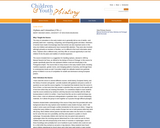
In this activity, students examine a primary source excerpt that speaks about the role orphaned children should play in the Portuguese empire. It provides insight into attitudes toward one particular group of children in an era of competition for wealth and dominance among European powers.

In this activity, students examine a source that focuses on youth organizations in East Germany in order to better understand communist society. It helps students see that communist organizations offered positive experiences that supported values they share. This helps students develop empathy for individuals who lived under communism, and paves the way for understanding the enthusiasm with which some individuals lived in communism, and the ambivalence many experienced at its end.
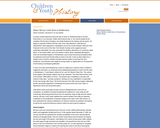
In this activity, students analyze a comic strip from the early 1900s. The image serves as a jumping off point for further discussion of the rapid rise of mass popular culture in American cities in the early 20th century. As an extension, students can be asked to research and write a short report on another example of 20th century visual culture that explores some of the same themes.
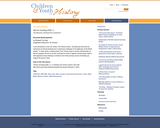
In this writing activity, students use the images and texts in the documents provided to write a well-organized essay drawing on evidence from three primary sources that helps to support this point of view: "Scouting was thus both an instrument of colonial authority and a subversive challenge to the legitimacy of the British empire." In other words, scouting would "train" African boys to accept colonial power as well as empower Scouts to use the movement to resist or oppose colonial power.
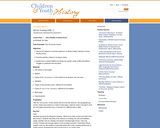
In this lesson, students discuss the influence of colonial experience on Baden Powell's decision to found the Boy Scouts. They will also describe activities related to scouting in Africa. Then, students will explain how a cultural tradition (scouting) can express social conflict and political struggle in a particular time and place.
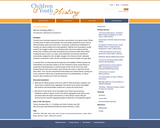
In this activity, students examine a series of primary source documents that relate the rise and spread of the Boy Scout movement in Africa and how it exposed the hypocrisy and instability of British imperial rule. A set of discussion questions is provided.
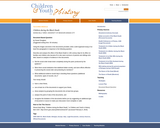
In this writing activity, students use the images and texts in the documents provided to write a well-organized essay of at least five paragraphs in response to the following question: Describe and analyze the effect of the Black Death in 14th century Italy for its effect on families and children who became ill or who were survivors of parents and siblings who died, based on analysis of evidence in the documents.
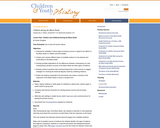
In this lesson, students analyze and compare different types of available evidence on the physical and social effects of the Black Death. Students will also develop possible explanations for the difference between contemporary narrative accounts of the Black Death and other types of evidence. Students will also develop research questions that could lead beyond the current sources to suggest strategies for resolving the historical disputes raised by conflicting evidence.
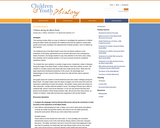
This teaching module offers an array of evidence to investigate the experience of children during the Black Death and question the traditional view that the epidemic caused wide-spread social chaos resulting in the abandonment of family members, even of children by their parents. A set of discussion questions is provided.
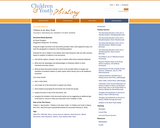
In this writing activity, students use the images and texts in the documents provided to write a well-organized essay of at least five paragraphs in response to the following question: Evaluate the role of children in the Atlantic slave trade during the 18th and 19th centuries, based on analysis of evidence in the documents.
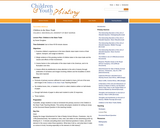
In this lesson, students examine children's experiences in the trans-Atlantic slave trade in terms of their capture, transport, and usage as laborers. They will also assess factors in the continuation of the slave trade in the Americas, and in its fluctutation over time, and assess efforts by abolitionists to draw attention to the evils of slavery through publication of narratives and images involving children and the brutalities to which they were exposed.
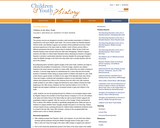
In this activity, students examine a series of primary source documents that are designed to provide a well-rounded examination of children's experiences in the trans-Atlantic slave trade. Each of the sources offers a different perspective. By juxtaposing these narratives against images of the slave trade, students can begin to understand the brutalities of enslavement. A set of discussion questions is provided.

In this writing activity, students use the images and texts in the documents provided to write a well-organized essay of at least five paragraphs in response to the following prompt: Create a portrait describing childhood in late Imperial China in terms of the roles children were socialized to fulfill, the roles parents were expected to play in providing for and nurturing children at different stages of development, and the cultural objects used in teaching, entertaining, and childrearing. Students will base their description on analysis of evidence in the documents.
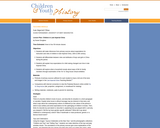
In this lesson, students will make inferences from primary sources about expectation for instruction and roles of children in late Imperial China, 10th to 20th century. Students will also explore what a household reveals about ways of life for family members through examination of the Yin Yu Tang house virtual exhibition.
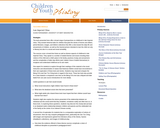
In this activity, students examine a series of primary source texts that offer a broad range of perspectives on childhood and family life in late imperial China. A set of discussion questions is provided.